Anúncios
Buying a fixer-upper home can be an exciting way to enter the real estate market at a lower price point. These properties, often sold at below-market rates, offer potential for significant equity growth once renovations are complete.
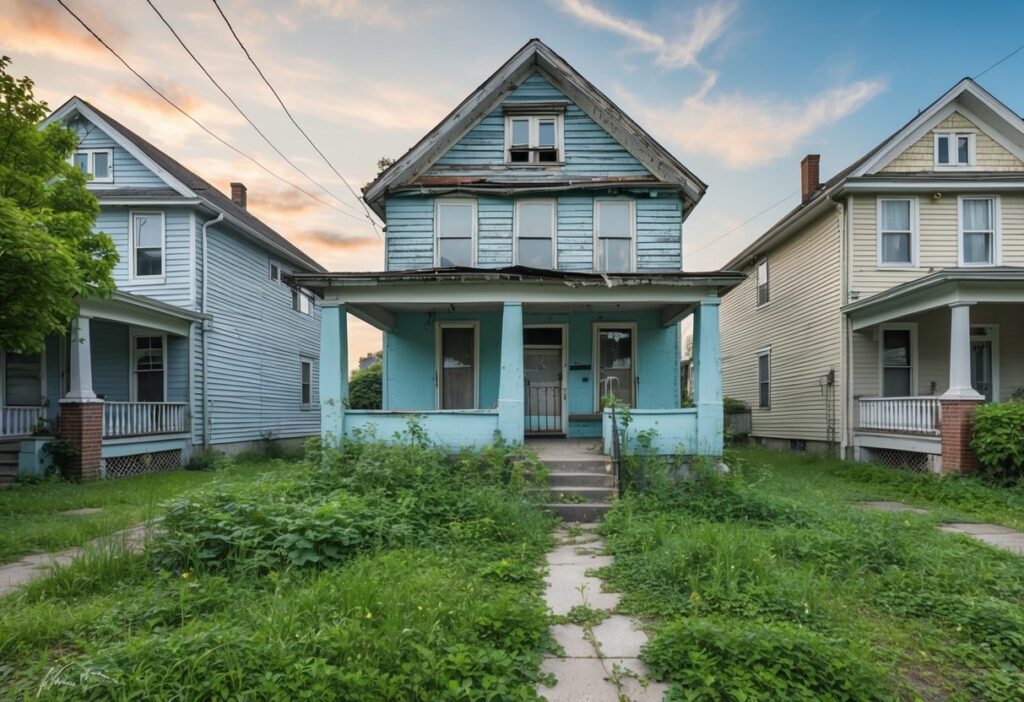
A fixer-upper is worth the investment when the purchase price plus renovation costs equals less than 70% of the home’s expected market value after repairs. This calculation, known as the 70% rule, helps investors determine whether a property will provide enough financial return to justify the time and expense.
Not all renovation projects are created equal. Cosmetic repairs like painting, new flooring, and updated fixtures typically deliver better returns than major structural issues such as foundation problems or extensive roof damage.
Successful investors carefully evaluate repair costs, neighborhood values, and their own skills before committing to a fixer-upper purchase.
Assessing the Potential of a Fixer-Upper
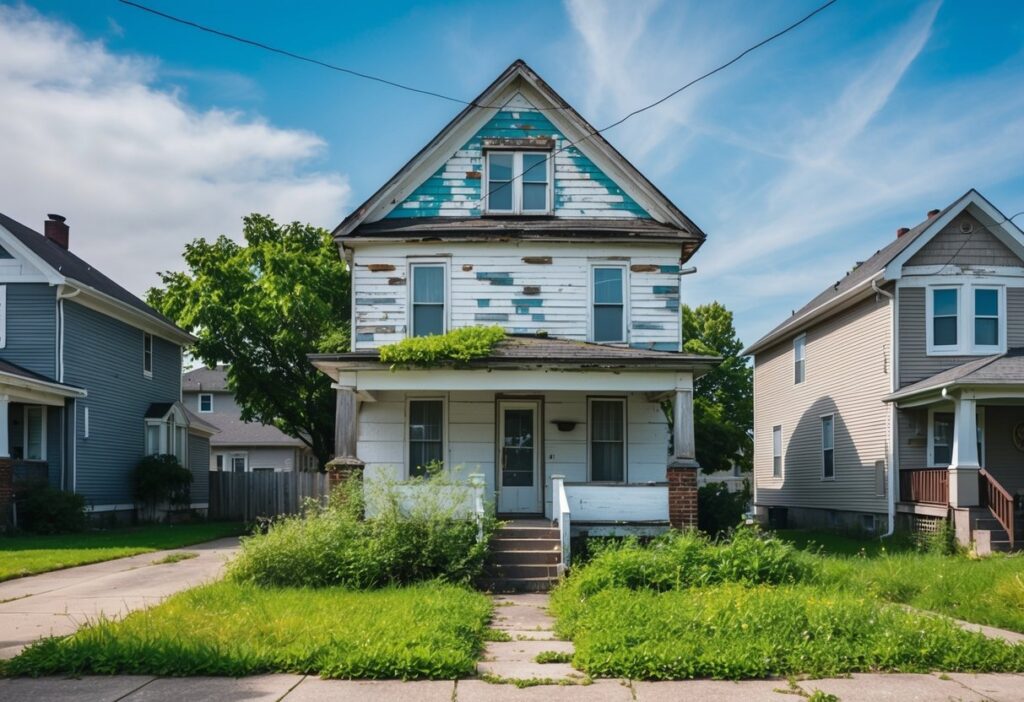
Determining if a fixer-upper is worth your investment requires careful evaluation of multiple factors. The location, potential future value, and severity of needed repairs will greatly impact your return on investment.
Evaluating the Location and Market Trends
Location remains the most critical factor in real estate investment. A fixer-upper in a desirable neighborhood with good schools and amenities often holds more potential than a similar property in a declining area.
Research local market trends by examining recent sales data and average time on market. Properties in neighborhoods with rising values offer better investment potential.
Look for signs of community improvement like new businesses, infrastructure projects, or increased development. These indicators suggest an area on the upswing.
Consider proximity to employment centers, public transportation, and daily conveniences. Even homes needing significant work can become valuable if positioned in convenient locations.
Speak with local real estate agents to gain insights about neighborhood trajectory that might not appear in basic data research.
Calculating the After-Repair Value (ARV)
The After-Repair Value (ARV) represents what a property should be worth after all renovations are complete. This calculation forms the foundation of your investment decision.
ARV Formula: Property’s Current Value + Value Added by Renovations = After-Repair Value
To determine a realistic ARV:
- Find comparable properties (“comps”) that have sold recently in the same neighborhood
- Focus on homes with similar square footage, bedrooms, and bathrooms
- Adjust for specific features your renovated home will have
- Consider seasonal market fluctuations
Professional appraisers typically use the “70% Rule” when evaluating fixer-uppers: Maximum Purchase Price = (ARV × 0.70) – Repair Costs
This rule builds in profit margin and accounts for unforeseen expenses that often arise during renovations.
Inspection and Identification of Key Issues
Hiring a professional home inspector helps identify critical problems that might not be immediately visible. This step prevents costly surprises after purchase.
Focus particularly on these high-cost repair areas:
- Foundation issues: Cracks, settling, or water damage
- Roof condition: Age, leaks, or structural concerns
- Electrical systems: Outdated wiring or insufficient service
- Plumbing: Old pipes, leaks, or compliance with current codes
- HVAC systems: Efficiency, age, and functionality
Distinguish between cosmetic issues (like outdated fixtures or paint) and structural problems. Cosmetic updates typically cost less and add immediate value.
Create a detailed list of all required repairs with estimated costs. Getting multiple contractor quotes provides more accurate budget planning and helps prioritize renovations.
Understanding the Costs Involved
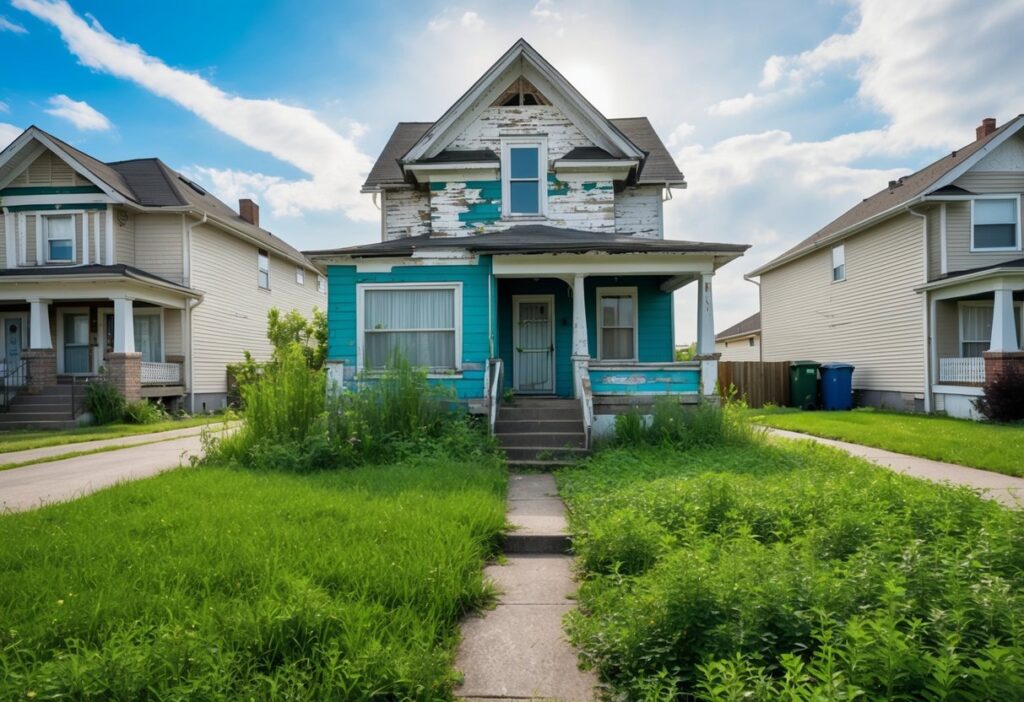
When buying a fixer-upper, accurate cost assessment determines whether your investment will pay off. The purchase price is just the beginning of what you’ll spend to transform a distressed property into a valuable asset.
Estimating Repair and Renovation Expenses
Start by creating a detailed inventory of all necessary repairs. A professional home inspection costs $300-$500 but identifies critical issues that might not be visible during a walkthrough.
Calculate renovation costs by getting multiple contractor bids for major work. Don’t rely on a single estimate. Professional quotes typically fall into these ranges:
| Renovation Type | Average Cost Range |
|---|---|
| Kitchen | $10,000 – $50,000 |
| Bathroom | $5,000 – $25,000 |
| Roof replacement | $5,000 – $12,000 |
| Foundation repair | $2,000 – $15,000 |
| New HVAC system | $5,000 – $10,000 |
DIY projects can save money but require honest assessment of your skills and available time. Remember that professional-quality work typically adds more value to the property.
Budgeting for Unforeseen Complications
Experienced investors follow the 20% rule—adding 20% to their renovation budget for unexpected issues. This buffer protects against financial strain when surprises emerge.
Hidden problems frequently appear when opening walls or floors. Water damage, mold, outdated wiring, and pest infestations are common discoveries that expand project scope.
Permit costs vary significantly by location and project type. Some renovations might trigger code compliance updates throughout the house. Check with local building departments before purchasing.
Seasonal considerations affect timelines and costs. Winter renovations in cold climates may require temporary heating solutions. Summer projects in hot regions might need scheduling adjustments.
Financing Options for Your Investment
Conventional mortgages work for properties in good condition, but many fixer-uppers require specialized financing solutions.
Renovation loans combine purchase and improvement costs into one mortgage. FHA 203(k) loans allow down payments as low as 3.5% for properties needing repairs. Fannie Mae HomeStyle loans offer competitive rates but require higher credit scores.
Hard money loans provide quick funding based primarily on the property’s potential value. These short-term options carry higher interest rates (8-15%) but can be refinanced after renovations.
Home equity lines of credit (HELOCs) work for investors who already own property. They offer flexibility but use existing real estate as collateral.
Cash purchases eliminate financing costs completely but significantly reduce your available capital. Consider the opportunity cost of tying up large sums in a single project.
Planning Your Renovation Project
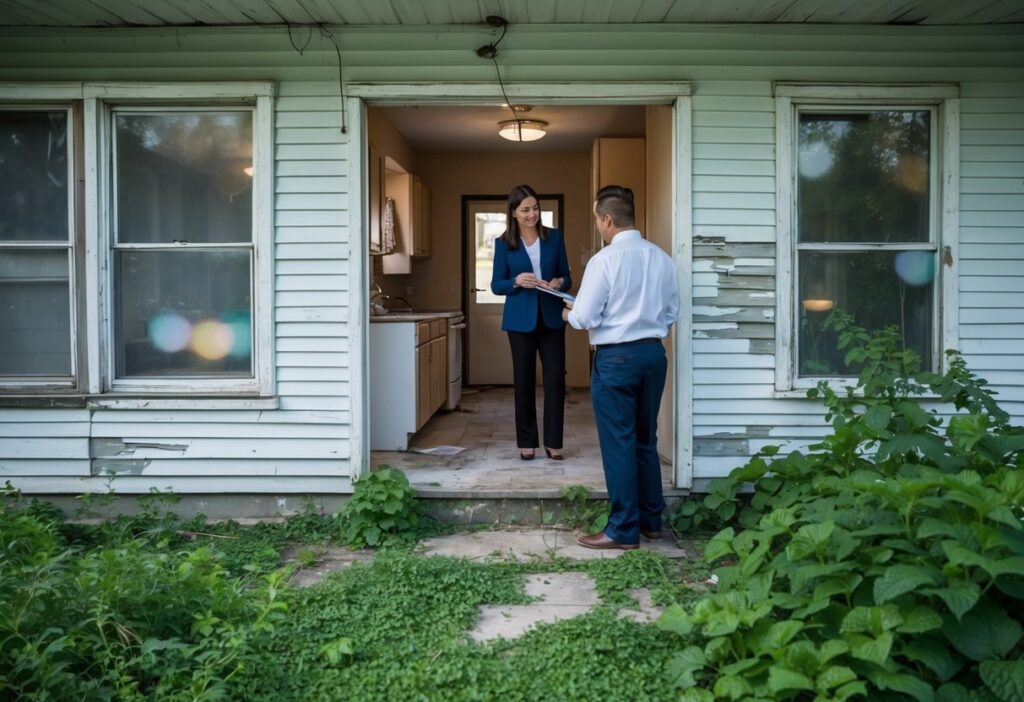
Proper planning is crucial when tackling a fixer-upper renovation. A well-organized approach saves money, prevents delays, and helps avoid common pitfalls that can turn a promising investment into a financial burden.
Setting Realistic Timelines and Milestones
Renovation projects typically take longer than expected. For a comprehensive fixer-upper, allow 20-50% more time than initial estimates suggest.
Break the project into clear phases such as demolition, structural work, mechanical systems, and finishing touches.
Create a detailed calendar with specific milestones. For example:
- Week 1-2: Demolition and cleanup
- Week 3-6: Foundation and structural repairs
- Week 7-10: Electrical, plumbing, and HVAC
- Week 11-14: Drywall, flooring, and fixtures
Weather conditions impact timelines significantly. Exterior work requires dry seasons, while interior work can proceed year-round. Always build buffer time between phases to accommodate unexpected discoveries or delays.
Prioritize work that affects livability first. Functional bathrooms and kitchens take precedence over cosmetic upgrades. This approach allows for phased completion if budget constraints arise.
Selecting the Right Contractors
Finding trustworthy contractors requires thorough research. Request recommendations from local real estate investors, hardware stores, and neighborhood social media groups. Interview at least three contractors for each major job.
Key questions to ask potential contractors:
- How many similar projects have you completed in the last year?
- Can I see examples of your work and speak with recent clients?
- Do you handle permits or is that the homeowner’s responsibility?
- What is your payment schedule and how do you handle change orders?
Always verify licenses, insurance, and bonding status. Check review sites like HomeAdvisor, Angie’s List, or the Better Business Bureau for complaints or praise.
Consider working with a general contractor for complex renovations. While this adds 15-20% to costs, it simplifies coordination and often prevents expensive mistakes or delays.
Navigating Permits and Regulations
Permit requirements vary significantly by location. Structural changes, electrical work, plumbing modifications, and room additions nearly always require permits.
Skipping permits can lead to costly fines, forced demolition, or complications during resale.
Contact the local building department early. Many offer pre-application consultations to clarify requirements. Budget $500-2,000 for typical residential permits, with inspection fees sometimes added separately.
Historical districts or properties in conservation areas face additional restrictions. Special permits or architectural review board approvals may be necessary even for minor exterior changes.
Typical permit timeline:
| Permit Type | Processing Time | Inspections Required |
|---|---|---|
| Minor work | 1-3 days | 1-2 |
| Major renovation | 2-4 weeks | 3-5 |
| New additions | 4-8 weeks | 5+ |
Keep meticulous records of all permits, inspections, and approvals. These documents prove valuable during eventual resale.
Maximizing Your Return on Investment
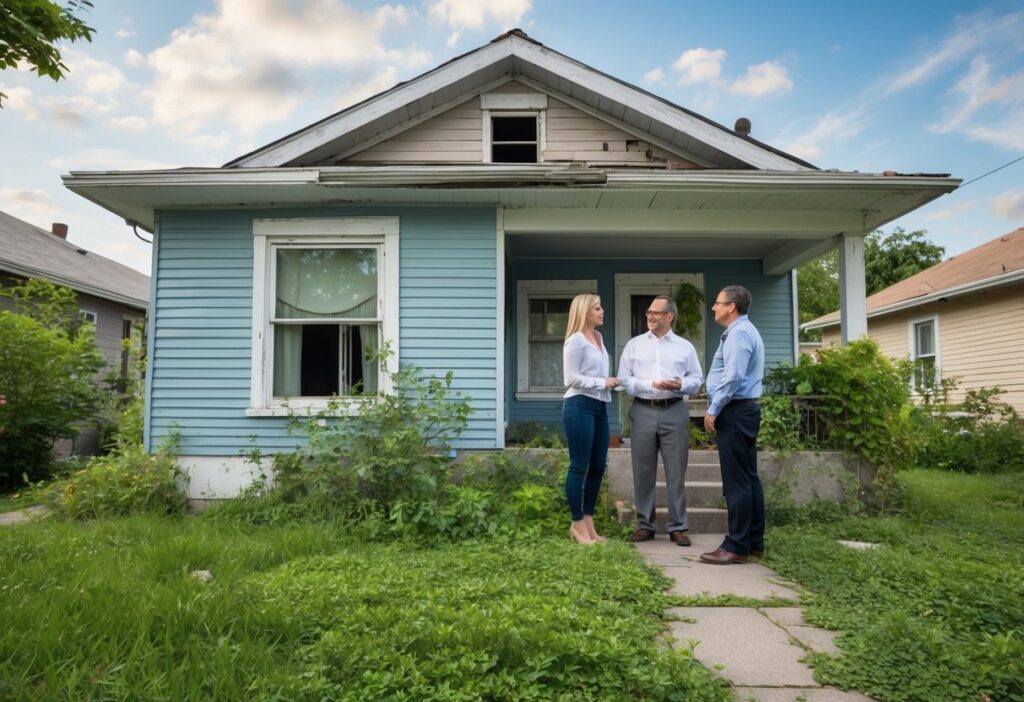
Smart decisions during renovation can significantly boost your profit margins on fixer-upper properties. The right approach to project management, strategic upgrades, and effective marketing makes all the difference.
Effective Project Management Strategies
Creating a detailed budget is essential before starting any renovation. Include a 15-20% contingency fund for unexpected issues that inevitably arise during renovation work.
Time management directly impacts profitability. Each day a property sits unfinished represents money lost.
Consider using project management software to track timelines and expenses.
Hiring the right contractors can make or break your investment. Get at least three quotes for major work and check references thoroughly. Sometimes paying more for quality work saves money in the long run.
DIY vs. Professional Work
| Task | Best Approach | Why |
|---|---|---|
| Painting | DIY | Low skill, high savings |
| Electrical | Professional | Safety, code compliance |
| Cosmetic updates | DIY | Good ROI, minimal risk |
| Structural work | Professional | Requires expertise |
Strategic Upgrades That Increase Value
Not all renovations yield equal returns. Kitchen and bathroom upgrades typically offer the highest ROI, often returning 70-80% of costs at sale.
Focus on improvements that buyers notice first. These include:
- Fresh exterior paint and enhanced curb appeal
- Updated flooring throughout main living areas
- Modern fixtures and hardware
- Energy-efficient windows and appliances
Avoid over-improving for the neighborhood. Research comparable homes before investing in high-end finishes that won’t be valued by the market.
Smart home features increasingly attract buyers. Simple additions like programmable thermostats or video doorbells can make your property stand out without major expense.
Marketing the Property Post-Renovation
Professional photography is non-negotiable in today’s market. High-quality images showcase your renovation work and attract more potential buyers.
Create a compelling property story. Highlight the transformation with before-and-after photos and detail the quality materials and improvements made.
Stage the property appropriately for the target buyer. Empty rooms appear smaller and fail to help buyers visualize living in the space.
Effective Marketing Tactics:
- Host a broker’s open house before the public listing
- Create virtual tours for online listings
- Emphasize any energy-efficient upgrades
- Target marketing to likely buyer demographics
Pricing strategy matters tremendously. Research recent sales of similar renovated properties to set a competitive but profitable price point.